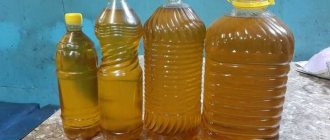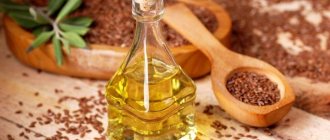Butter is always present on the table in the morning. Without it, it is impossible to make a delicious sandwich, and although it is saturated with fat, in small quantities it is not at all harmful. On the contrary, in the morning, butter is even beneficial, as it stimulates the release of bile accumulated overnight from the gallbladder and prevents the formation of gallstones.
But the product varies. Even according to GOST, significant differences in composition and recipe are allowed. Here are seven signs of a quality product that are important to consider when purchasing.
Where does hardness come from?
People learned to prepare butter many centuries ago. To do this, in ancient times they used hand mixers to beat the cream until it became a homogeneous thick mass. The production technology has changed little so far: butter is still whipped in mixing devices, and dairy products are used for its production - full-fat cow's milk, natural cream.
When whipped, the product becomes thick, and when cold it hardens and retains its shape well. However, real butter should not be too hard: if you take it out of the refrigerator and hold it for a few minutes at room temperature, the product will become plastic, and it will be very easy to spread it on bread.
When you go to the store, take a pack from the refrigerator and study its composition; you will see that all products differ not only in price, but also in the set of components. The label should be marked: “cow”, “creamy”, this means a high quality product. Touch the packaging in your hands: it is inherently hard. The manufacturer produces it in accordance with the relevant GOST, and there can be several varieties:
- amateur;
- melted;
- Vologda;
- peasant.
Moreover, pay attention to the packaging. The shortest shelf life for oil wrapped in parchment paper is no more than 10 days. Products wrapped in aluminum foil will last in the refrigerator for up to 15 days, and if you bought the product packaged in a metal can, it will last up to 3 months.
Attention!
Real butter should have a characteristic shine, and the color of the bar should be yellow.
How long should oil be stored?
The period during which the product retains its freshness depends on the storage method and the composition of the oil:
- 5-10 days on the table at room temperature in an oil dish under an opaque lid;
- 10-15 days in the main compartment of the refrigerator in parchment paper;
- 15-20 days in the main compartment of the refrigerator in foil paper and containers;
- 3-5 months in the freezer if the butter is unsalted;
- 1 year in the freezer if the product has added salt.
Having decided on the period during which a portion of oil will be sold, you can choose a convenient storage option, however, you should definitely take into account that the product could have been lying in a store or warehouse for some time, so the storage duration is counted from the production date indicated on the packaging.
Where to start checking
Even at the stage of choosing oil in the store, you need to carefully read the ingredients. The main components of natural butter are exclusively cream and whole milk. Natural oil cannot contain any other fats.
At the same time, you should not trust the inscriptions “GOST” or “natural oil” - they do not always correspond to reality.
If it is possible to evaluate the color of the oil, it is better to do this before purchasing. It can have different shades. Only too white or, conversely, too bright yellow color can cause alarm.
Of course, even when purchasing, you should not forget that natural oil cannot be too cheap!
General rules
Oil has many beneficial properties, but loses them when exposed to high temperatures and direct sunlight. Therefore, the product should be stored in a cool, dark place. In urban environments, the ideal place is a refrigerator, but in the countryside, a cool cellar does the job well.
But knowing the optimal conditions is not enough, because there are many nuances - packaging, composition, temperature conditions. All this must be taken into account when organizing product storage.
Two packs of oil
What kind of oil can it be?
In the Soviet Union there was not an abundance of different types of food products, however, when purchasing food, a person knew exactly what he was buying and did not experience anxiety associated with doubts about the quality. The products were produced in accordance with the requirements of GOST, according to one approved recipe, and their packaging fully indicated the composition, fat content and other data important to consumers.
But after the collapse of the Soviet economic system, store shelves were filled with goods that imitated those familiar to consumers. And among them, unnatural oil took the leading position.
Modern conscientious manufacturers follow traditional recipes and often use names familiar to the older generation in their names.
| Milk fat content in percent | Product name according to GOST |
| 50, contains herbal and flavoring additives | Tea |
| 61, the composition includes vegetable fats that make it easier to spread the butter, there are flavoring additives | Sandwich |
| 72,5 | Peasant |
| 80 | Amateur |
| 82,5 | Traditional |
According to the traditional manufacturing recipe, products with a fat content exceeding 70% do not contain herbal additives.
"Vologodsky" no longer exists
According to the Russian Union of Dairy Industry Enterprises, butter ranks second in our country after alcoholic beverages in terms of the level of adulteration. By law, this product must contain exclusively dairy components - but what does it actually consist of?
Enterprising manufacturers are replacing milk fat with cheap palm kernel oil. It does not contain valuable nutrients, microelements and vitamins inherent in a natural product obtained from a cow. Moreover, vegetable fat contains trans isomers of fatty acids, which cause pathological changes in the body.
At the same time, it is written on the packaging that the product is manufactured in accordance with GOST, that the oil is “Vologda”, and other words that reassure the consumer. After all, not every buyer knows that “Vologda” is no longer the name of the variety; now any manufacturer operating in the Vologda region can call their product this way.
In Europe, the requirements for oil are more stringent than ours,” says Roman GAYDASHOV, an expert at the consumer rights protection society “Public Control”.
— They don’t approve not only of components that replace cow fat, but even of pasteurization, cream, and various odors. Our state guarantees the consumer a certain safety, that is, it protects against radionuclides and other dangerous substances, but does not ensure the quality of the product. This results in us eating a creamy vegetable spread instead of butter.
Only "butter"
The product should be called “oil” (Photo: pixabay.com) Carefully examine the packaging. It should say “butter” and not “maslitse”, “maslichko” and other diminutive terms. If the manufacturer indicates “oil” on the packaging, he is obliged to adhere to the standard in recipe and preparation.
It would be a good idea to read the composition. The fewer ingredients it has, the better. If you find vegetable fat in the composition, put the package back. This product has nothing to do with natural oil.
How to check for falsification at home
The most common way to adulterate oil is by adding hydrogenated vegetable fats to it or completely replacing the product with them. Unfortunately, to determine their presence in butter at home, you will have to rely on your own sense of smell and taste. Since only laboratory analysis can determine the exact composition of the purchased product. There are other ways of falsification: cottage cheese or cheese is mixed into the butter.
However, at home you can also try to determine the quality of butter if you have any doubts.
1 way. The easiest way is to taste it. Take a small piece and taste it, as mentioned above, the taste should be clean - with a delicate sweet-milky aftertaste. It should not contain a bitter, fishy taste or be too salty (the exception is salted butter, to which salt is specially added, thereby increasing its shelf life). Real butter also has virtually no odor and melts quickly in your mouth, unlike spread.
Method 2. Dissolve a tablespoon of oil in a glass of hot water. When it has completely melted, stir the liquid and let it settle. Pure butter should not leave a sediment; it should be stirred evenly and not disintegrate into “components.”
3 way. Place a stick of butter in the freezer for an hour, this should be enough time for it to harden if it is made from cream. Try cutting a frozen piece with a knife; if it begins to crumble into pieces (rather than being cut with a knife), and the surface being broken off is clean and uniform, then this is a truly natural product, without any additives. In counterfeit, vegetable fats do not allow the butter to completely harden even in the freezer; it will still be soft and easy to cut with a knife.
4 way. Heat a frying pan, put a piece of butter in it. It will heat up, begin to melt, and a foam will appear that smells pleasant. The spread will melt with either an unpleasant odor or no odor at all.
However, it is not recommended to fry anything in butter, as harmful carcinogenic substances are formed in it when heated too much. For frying, it is better to use olive or refined sunflower oil.
5 way. If you accidentally forgot to put the oil in the refrigerator and moisture appeared on its surface in the form of water droplets, such oil cannot be real. In this case, natural butter will melt slightly, become plastic, and can easily be spread on a piece of bread.
Now you know how to determine the quality of butter at home.
Oil belongs to the category of perishable products. Therefore, if you discover that you have purchased a low-quality product, do not hesitate to return it to the store: even if you have a receipt a day later, it will be difficult for you to prove that the product was damaged not due to improper storage at home. I suggest watching a video from the “Test Purchase” series of programs from which you will learn how to choose butter, which was recognized as the best, and you will also see how to deliciously prepare Kiev cutlets from chicken breast and butter.
High price
To produce a kilogram of butter, you need 40 liters of milk (Photo: pixabay.com) In any case, the cost should be twice as high as that of margarine and spread. Natural oil cannot be cheap. To get a kilogram, you need to use three and a half kilograms of cream with a fat content of 30 percent. And they are obtained from 40 liters of milk. Thus, a kilogram of butter should be equal in cost to 40 liters of milk, and this does not take into account the cost of work on its production.
Choose a mid-price product among those that cost more than spreads. The cost of high-quality oil from different manufacturers is approximately the same.
Small print
Before, I had never thought about how to properly store sunflower oil. I placed it on the table near the stove. When I cooked something, I simply reached out and poured it into the pan. In general, no problems. To be fair, the picture was exactly the same for my friends. Everyone I knew kept a bottle on the table or, at most, in the kitchen cabinet within arm's reach of the stove.
And then one day I was inspired to read the information on the label. And there in small print it says:
After opening, store in the refrigerator.
How to replace oil
If you notice that the butter in the refrigerator has become soft or, conversely, has become very hard, then most likely you bought a different product. It could be:
- margarine. It is made from vegetable and animal fats. It is the use of vegetable fat that gives it its characteristic softness. Housewives find it widely used and use it for baking cakes, pies, and cookies. Some people put it on sandwiches. In terms of consistency, it can be hard, soft and even liquid, depending on its purpose. However, the whole catch lies in the harmfulness of margarine: due to the dangerous fats it contains, it is considered hazardous to health;
- spread It is produced on the basis of milk and vegetable fats. Even if the spread sits in the refrigerator for a long time, it will remain soft. Its fat content varies, ranging from 15 to 50%. The spread is suitable for sandwiches, it can be used in cooking, but in terms of harmfulness it is not inferior to margarine.
When choosing a product in a store, don't skimp. Often, what is cheap is of poor quality and even unsafe for health. Read the labels, especially the small print, this will help you not unknowingly run into a fake and buy only high-quality butter.
And then you can make delicious compound butter with a variety of fillings that will diversify your menu.
Say thanks to the author! (3)
Hello! In my collection you will find both new and familiar recipes for delicious dishes. I will be glad to exchange opinions in the comments. Write!
Subscribe to our channel in Yandex.Zen! Click “Subscribe to channel” to read Vcusnyatina.ru in the Yandex feed
Back to the 90s
An examination carried out by the State Unitary Enterprise “Moscow Quality” in the testing laboratory “Test-Pushchino” showed: out of five samples of butter, only two met the information on the label, the requirements of GOST and the Technical Regulations for dairy products (see table). For the majority, the fatty acid composition did not meet the requirements of the law, in other words, the manufacturer used vegetable fats, not animals. E. coli was found in one of the samples, not to mention prohibited preservatives and off-flavors.
Such a surge in butter adulteration was observed only in the early 90s. It seemed that we had successfully survived this moment,” laments Igor NAZAROV, Deputy General Director of the State Unitary Enterprise “Moscow Quality”
.
It turns out they didn't survive. Except that the choice has become larger. Today you can find about 80 different types of butter on Moscow shelves. More than 60% are Russian-made. The price range is from 30 to 140 rubles. Imported (France, Finland, New Zealand) is more expensive, but, as practice shows (including the latest examination), it is of better quality.
Abroad, they prefer cultured butter,” says R. Gaidashov. — It contains lactic acid concentrate and is considered more useful. Our consumers prefer sweet cream varieties, for the production of which only pasteurized cream is used.
By the way, importing companies do not always bring packaging into compliance with Russian legislation - they do not indicate the category of oil or write a grade (for example, “Extra”), which we do not have. Therefore, it is extremely difficult to understand what is inside by looking at the sealed package.
Try to find a good oil experimentally. Here are some signs of a quality product:
Priced at 30 rubles. Only a spread can be sold;
High-quality butter does not harden even in the freezer, it always remains plastic and after 5 minutes it should be easily spread on bread;
The color of good oil is from whitish to light yellow; a bright yellow tint is a bad sign;
The oil should not crumble at the break (if this happens, it means it contains a large amount of moisture).
| Results of the examination of the State Unitary Enterprise "Moscow Quality" and the laboratory "Test-Pushchino" * | ||||||||||
| Oil, fat content, manufacturer | Compliance with organo-avian indices (taste, smell, consistency) | Moisture content, % | Mass fraction (ppm) of fat, % | Fat composition of milk fat | Microbiological safety indicators | Conse-rants | Compliance with technical regulations and GOST | |||
| according to GOST | actual content | according to GOST | declared on the label | actual content | ||||||
| Butter “Thousand Lakes” sweet-creamy classic unsalted, 82.5%, Nevskie Cheese LLC (St. Petersburg) | 18,5- 14,0 | 80-85 | 82,5 | 84,9 | corresponds to milk fat | not detected | corresponds | |||
| Traditional butter “Smolenskoye”, 82.5%, Krasa Gormol LLC, (Smolensk region) | 15,8 | 82,5 | 82,5 | 82,9 | Not | not detected | does not comply: contains herbal additives, preservatives, and only pasteurized cream is indicated on the composition label | |||
| Cow butter, “Dairy product”, 82.5%, Ozeretsk Dairy Plant CJSC (Moscow region) | 25,4 | 82,5 | 82,5 | does not correspond to milk fat | Escherichia coli detected | 159,5 | not compliant according to microbiology, ppm moisture, ppm fat, contains vegetable additives, preservatives, and only pasteurized cream is indicated on the composition label; absent packing date | |||
| Traditional butter “Dairy Farm”, 82.5%, Nelidovsky Creamery Plant LLC (Tver region) | 14,3 | 82,5 | 82,5 | 84,1 | does not correspond to milk fat | not detected | not compliant according to organoleptic indicators, it contains vegetable additives, preservatives, while the composition contains only pasteurized cream; absent packing date | |||
| President, 82%, Lactalis International, France | 14,0- 46,0 | 15,4 | 50,0- 85,0 | 82,7 | resp. milk fat | not detected | corresponds | |||
| *The butter was tested for compliance with the requirements of the Federal Law of June 12, 08 No. 88-FZ “Technical Regulations for Milk and Dairy Products”, GOST 52969-2008 “Butter. Technical specifications" | ||||||||||
Probably every housewife has ever encountered such a situation: a sandwich hopelessly spoiled by “butter” from a freshly opened pack. It’s summer now, and products sold in stores quickly deteriorate if stored improperly. Especially when it comes to perishable products, which include butter. will tell you how to choose butter and how to determine its quality at home. Let's figure out what this natural dairy product should be like.
How to check oil quality
To check the quality and naturalness of the oil at home, you can carry out a couple of simple tests:
1. Place a spoonful of oil in a glass of hot water.
Stir the oil well until it is completely dissolved. If the water has become homogeneous, white in color, and there are no pieces of oil left in it, then the product is completely natural.
If there is oil left in the water or on the walls of the glass, it means that its quality is low, or it is a spread or margarine.
2. Place the briquette in the freezer for 1 hour.
Then, having taken it out, try to cut a piece from it. Natural butter without unnecessary additives will not be easily cut into thin slices. It will break.
There are no such problems with margarine or spread - it cuts perfectly even when frozen. But when chilled, for example, when taken out of the refrigerator, the spread or margarine has a denser structure.
3. If you put a piece on a hot frying pan,
then the surrogate with vegetable fats will produce a crackling sound and a not very pleasant smell. Natural oil behaves neutrally.
It is worth checking the oil not only for naturalness, but also for freshness. Even in the absence of a pronounced odor, a product that has already begun to deteriorate can be identified by a slight bitterness - fresh oil should not have this.
Material about the results of the examination of butter - 35 brands of butter, 82.5% were blacklisted, a lot of counterfeit.
I will be grateful for your like!
Subscribe to the channel Forever on a diet here.
How to pack butter for storage
Storing butter in the main compartment of the refrigerator is the best option if the product will be completely consumed within a few weeks. How long butter is stored at an average temperature of -3 to +3 degrees directly depends on the packaging.
- If it transmits light, that is, it is made of thin paper or polyethylene, then the product will be fresh within 1.5-2 weeks. You can extend this period by simply placing the packaging in a dark plastic container that does not allow light to pass through.
- If the butter is packaged in foil or laminated paper, no additional measures are required, however, a hermetically sealed container will help preserve its freshness and taste even better.
Oil in packaging
Attention! There is another reason why container storage should be organized. Butter easily absorbs odors and acquires the taste of other foods, so you need to place it in a container with a lid to preserve the taste without any foreign notes in it.
Consistency is moderately firm
The bar should be hard (Photo: pixabay.com) When the bar is in the refrigerator, it hardens, and in supermarkets, even in open display cases, the butter should be moderately hard.
Why in moderation? Because the consistency of the product may vary depending on the time of year it is made. Winter oil is always hard, “oaky” in the refrigerator. But summer is softer and does not harden completely at normal storage temperatures. When you press on the packaging, you can feel it crumble under your finger.
Spreads do not harden in the refrigerator. If you take such a pack in your hands and press on it, it will wrinkle on both sides.
Storage at room temperature
Some people prefer to buy food for future use. For large volumes of product it can be difficult to find space in the freezer or refrigerator, so it is stored at room temperature. Another reason for oil to be at room temperature is a breakdown of the refrigeration unit.
The following tricks will help keep the product warm and fresh.
Storage in saline solution
- A large piece is cut into portions of 200-250 grams, each of which is wrapped in parchment.
- Next, begin preparing the saline solution. To do this, pour 1-2 tablespoons of salt into 1 liter of water and mix vigorously until the grains are completely dissolved.
- Place portions wrapped in parchment into a container and cover tightly with a lid. Place the container in a basin or bucket and place a weight on top. Everything is filled with saline solution and put in a cool place.
Oil on the refrigerator shelf
Storage in vinegar
Portioned pieces of butter are wrapped in parchment and then in a specially prepared cloth. To do this, clean gauze is cut into pieces of the required length and moistened in 6% vinegar. Then the portions are placed in a glass container and sprinkled with sugar. The container must be closed and placed in a cool place without direct sunlight.
Freezer – long-term storage of oil
Many housewives are interested in the question of whether butter freezes in the refrigerator and whether it is possible to extend its shelf life using the freezer. If you suddenly purchased a large amount of oil, then it is allowed to be stored in the freezer, but only under certain conditions:
- separate sealed packaging;
- the temperature is not lower than -18 degrees (otherwise it will freeze and lose its beneficial and tasteful qualities).
Butter
When exposed to sub-zero temperatures, the soft product freezes and becomes so hard that it is very difficult to cut. However, repeated freezing and thawing of butter is not recommended. To avoid such a mistake, experienced housewives advise preparing soft butter before freezing as follows:
- the entire mass is divided into portions of 200-250 grams;
- each portion is wrapped in parchment paper;
- The finished portions are placed in a clean, dry plastic container with a lid.
This measure will allow you to remove the product from the freezer as needed. Defrost it in the main compartment of the refrigerator, where the oil does not freeze.
Chopped butter










